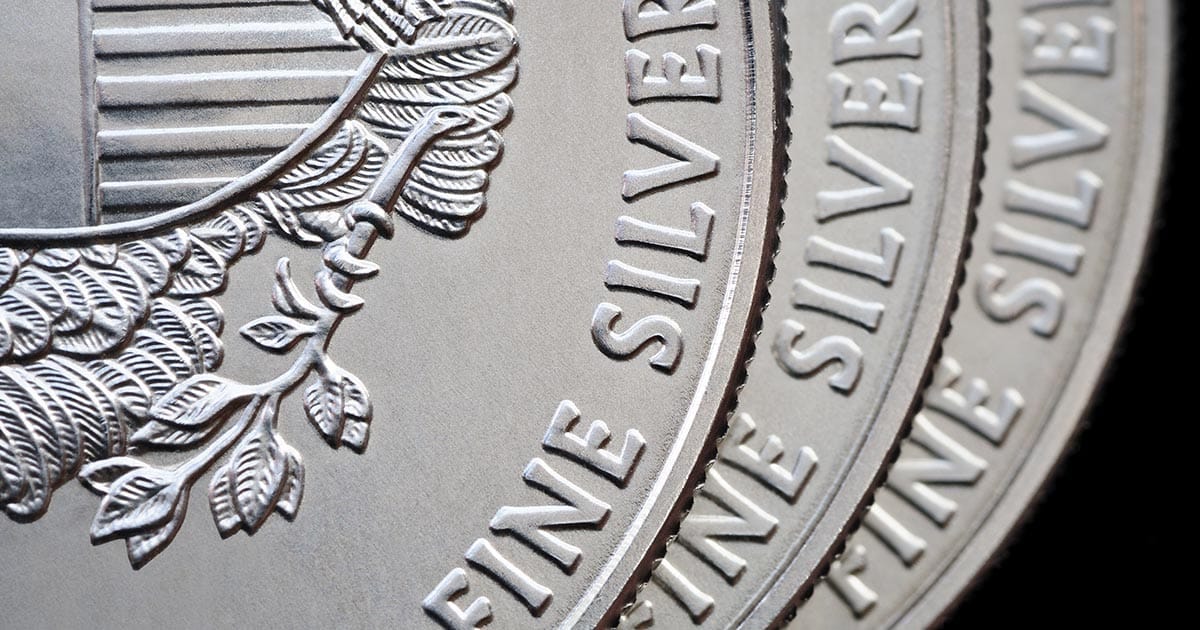
What is Fine Silver?
Fine silver, distinguished by its exceptional purity, is assessed using the millesimal fineness system, expressed as a decimal. To be categorized as investment or commodity-grade, “fine silver” products must boast a purity of 99.9%, often denoted as .999 or three nines fine. Notably, the Royal Canadian Mint produces the Silver Maple Leaf coin with ultra-fine .9999 silver, showcasing its exceptional quality.
Historically known as “coin silver,” fine silver, purer than sterling silver, was once used for crafting coins until 1837. Its malleability allows for intricate work, such as creating fine wires or transparent sheets. While the term “silver” has been loosely used for any silver alloy, contemporary usage reserves it for high-purity silver.
Unlike sterling silver, fine silver is 999 parts per thousand pure. Due to its remarkable malleability and electrical conductivity, fine silver finds applications in jewelry and electronics. Its thinness is so pronounced that fine silver wire is colloquially called “thread.”
Production
The production of fine silver is a meticulous process that transforms raw silver ores, such as argentite and galena, into the refined, high-purity silver sought in the market. One prevalent method employed in this transformation is electrolysis. This process passes an electric current through a vessel containing the silver ore. The result is the separation of silver from other metals in the ore, allowing the pure silver to collect at the bottom of the vessel.
To achieve the esteemed status of fine silver, the refined product must attain a purity level of at least 99.9%. Only a select group of mints worldwide can produce fine silver coins. Among them are distinguished names like the South African Mint, Mexican Mint, Austrian Mint, and Perth Mint. These institutions adhere to rigorous standards, ensuring that the final product meets the criteria of excellence set by global authorities.
After reaching the required purity level, the silver is shaped into various forms, such as bars, coins, or rounds. Traditional ingot-making methods, including hand-pouring molten metal into molds, contribute to the unique characteristics of some fine silver products, identifiable by softer edges and a relatively duller luster. Alternatively, modern pressing techniques like those used for making coins result in bars with a shiny, mirror-like finish and crisp, machine-made edges.
Application
While fine silver is inherently too soft for certain industrial, commercial, or jewelry applications, its exceptional conductivity renders it well-suited for specific uses. One notable application is electrical wiring, where the metal’s conductivity properties shine. The fine silver wire, sometimes colloquially referred to as “thread,” is a testament to its remarkable malleability and thinness.
Fine silver is commonly found in silver coins and has gained prominence as a preferred investment choice. Bars containing a minimum of 99.9% fine silver have become a staple in investment portfolios. The approval of silver bullion for Individual Retirement Accounts in 1977 by an act of Congress further solidified its status as a sought-after investment. Investors value the tangible nature of fine silver bullion, with bars available in various sizes, including the commonly chosen 1,000 troy ounces, smaller 100 troy ounces, and larger 5,000 troy ounce options. Fine silver’s enduring popularity in the investment landscape is a testament to its intrinsic value and stability.
Investing in Fine Silver
Fine silver takes various forms as an investment, with bars, coins, and rounds being the most common. Sovereign government-issued coins, such as the Silver American Eagle and Silver Maple Leaf, hold a special place in the market, commanding higher premiums due to their exceptional quality and potential numismatic value. Signature coins from prominent mints, including the Royal Canadian Mint and the Perth Mint, add diversity to investment portfolios.
Private companies like Sunshine Mint and Valcambi Mint also contribute to the landscape of investment-grade silver bullion. The choice between bars and coins often depends on investor preferences and specific market conditions. Investors should stay informed about the silver spot price, ensuring strategic and well-timed acquisitions.
Fine Silver: From Production to Investment
Fine silver embodies a secure and tangible investment option with its unparalleled purity and diverse applications. From its intricate production processes involving electrolysis to its versatile applications in electrical wiring, fine silver presents a unique blend of tradition and modernity. Fine silver continues to stand the test of time as a favored investment since its approval for Individual Retirement Accounts in 1977, offering investors a reliable store of value in an ever-changing financial landscape. Whether in the form of meticulously crafted coins or precisely pressed bars, fine silver remains a beacon of stability for those navigating the complexities of the investment world.




